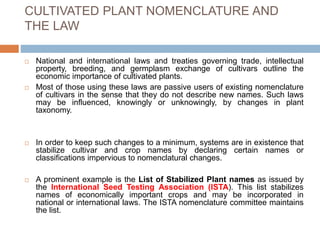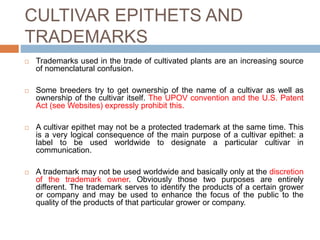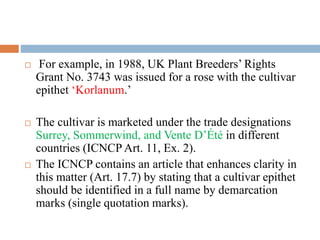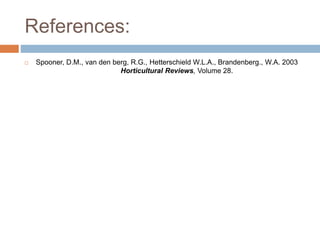This document provides an overview of the taxonomy and classification of cultivated plants. It discusses the history of plant taxonomy from ancient Greek and Roman times through Linnaeus' establishment of binomial nomenclature in the 1700s. It also describes the development of different nomenclature codes and rules over time to standardize naming, including the International Code of Nomenclature for Cultivated Plants. The document uses examples like rice taxonomy to illustrate hierarchical classification systems and discusses ongoing debates around defining taxonomic ranks.
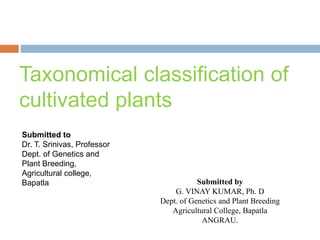

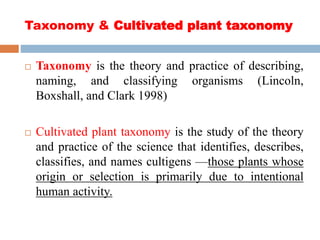



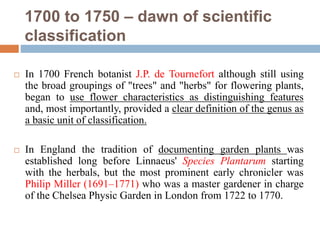

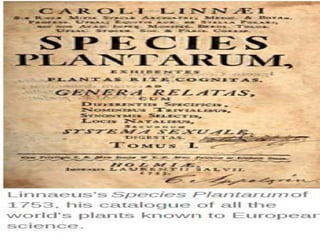
![ The history of cultigen nomenclature has been discussed by
William T. Stearn and Brandenberg, Hetterscheid and Berg.
It has also been examined from a botanical perspective and
from the origin of the Cultivated Plant Code in 1953 until
2004.
William T. Stearn (1911–2001), taxonomic botanist,
classical scholar and author of the book Botanical Latin has
commented that "cultivated plants [cultigens] are mankind's
most vital and precious heritage from remote antiquity".](https://image.slidesharecdn.com/gp601vinaykumarlec-210317184645/85/Gp601-vinay-kumar-lec-2-10-320.jpg)



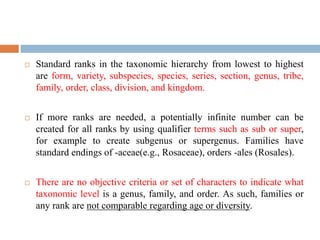

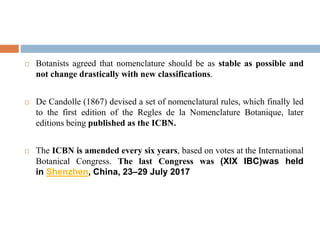
![The ICBN has six main
principles
The first three enter into our discussion of how
plants get their names, and how new names
may be assigned to species that previously
had another name.
Principle I. Botanical nomenclature is
independent of zoological and bacteriological
[and viral] nomenclature. However, some
suggest a unified code (BioCode) should be
sought.](https://image.slidesharecdn.com/gp601vinaykumarlec-210317184645/85/Gp601-vinay-kumar-lec-2-17-320.jpg)














![ One fundamental characteristic that distinguishes
the PhyloCode from the conventional hierarchic
nomenclatural systems is its ranklessness. The
PhyloCode will cover the naming of clades and
species, but in this system these terms refer not to
ranks, but to different kinds of biologic entities.
As the preface to the PhyloCode states, “both
[clades and species] are products of evolution that
are discovered, rather than created, by
systematists, and both have an objective
existence regardless of whether they are named”](https://image.slidesharecdn.com/gp601vinaykumarlec-210317184645/85/Gp601-vinay-kumar-lec-2-32-320.jpg)
